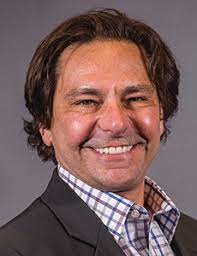CLICK HERE for Part 1
So, here’s the skinny, we have a crisis of unprecedented proportions in the property market and a very hard market for liability insurance especially for certain types of coverage such as sexual abuse and law enforcement but the third leg of our P&C stool is steady: workers’ compensation. The result of these crisis and ever rising costs are three fold:
- Your entity is spending more on your self-insured losses
- Your entity is spending more to transfer the risk to a pool, insurer or reinsurer
- Your entity has blown through reserves and needs to replenish the reserve account
That’s a tall order and the underlying factors which have created items 1-3 are not going away anytime soon. I would argue perhaps never. In other words, this isn’t something we can ignore and survive. So what can we do other than pay more for insurance?
I will share with you what my clients are doing and perhaps it can apply to your situation. First, and I want to be clear about this, our clients are doubling down on risk management and claims management. They are investing in technology to better understand the risk and potential prevention mitigation techniques. They are also attending PRIMA conferences and workshops to learn from one another.
Second, they are changing the way they cover events by transitioning to claims made for certain very volatile exposures, such as sexual abuse, civil rights and law enforcement. It is not realistic or sustainable to price and fund losses today that will be paid 10 or more years from now (other than workers’ compensation). No one predicted the type of nuclear verdicts we see nowadays, even as recently as a few years ago. How can an actuary tell you what you need to set aside to pay law enforcement claims in 2030 or 2035?
Third, they are looking at group and pure captives to fund for large retentions as the insurance industry withdraws from geographic regions and lines of coverage where underwriting profit is elusive to impossible. Captives do not offer the same benefits as they do to those in private sector but there are advantages that cannot be ignored. Not the least of which is they are regulated by a department of insurance while most pools and self-insured entities are not. Captives are to pools what the largest banks are to the banking system; they are safer because they are regulated.
Fourth, there are reinsurance financial structures that are utilized by the insurance industry to provide multiyear protection of large retentions (retentions greater than $2M). In addition, there is a reinsurance market underutilized by pools that leans more on finance and quantitative risk than qualitative. Pools should be talking to those companies. The capital markets which offer significantly greater amounts of capital are an untapped source for financing of certain large exposures such as catastrophic risk.
In summary, the decade of the 2020s has started with not one but two worldwide events: a pandemic and a war in Europe. And I don’t think the decade is done with us yet. The challenges before us will not be solved by the solutions of the eighties or nineties. It’s time to innovate again.
*The views and opinions expressed in the Public Risk Management Association (PRIMA) blogs are those of each respective author. The views and opinions do not necessarily reflect the official policy or position of PRIMA.*

By: John Chino, ARM-E, ARM-P, CSRM
Area Senior Vice President, Arthur J. Gallagher & Co.
John is enjoyed 40 years in the industry, all with Gallagher and has spent nearly his entire career in the public sector. He currently serves self-insured pools and large sophisticated self-insured public agencies. In addition, he is on the advisory board for the USC Risk Management Minor Program and frequently serves as a guest lecturer. John is a member of the faculty of the National Alliance of Insurance Education and Research where he teaches the Certified Scholastic Risk Management Program (CSRM). He is a course instructor for The Institutes and helps students to pass ARM exams.



